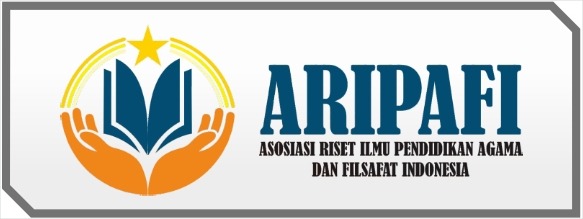The Classification Of Hadith Is In Terms Of Quantity and Quality Of Sanad
DOI:
https://doi.org/10.61194/ijis.v1i1.37Keywords:
Hadith, Quantity, QualityAbstract
Hadith as one of the sources of Islamic law is a basis that is often used as the strength of a provision in solving problems, however, the lack of knowledge about the classification of hadith often results in debate, whether it is related to whether or not the hadith used is authentic. The number of hadiths that are frequently used should have a strong review of the quality and quantity of the sanad. With this research, it is hoped that there will be references that can be used as references regarding the quality of the hadiths that will be used, considering that there are many hadiths that sometimes make many people unable to distinguish between hadiths, proverbs or just words in Arabic. This study aims to find out about the classification of hadith in terms of quantity and quality of sanad. The research method used is the study of literature (library research) data collection techniques with documentation. The data analysis technique uses content analysis. The result of this study is that hadith is the second source of religious teachings after the Qur'an. besides that hadith also has a function as an explanation of the verses of the Qur'an. Based on the quantity (number of narrators) or the person who narrated a hadith, it can be divided into mutawatir and ahad hadiths. Meanwhile, in terms of the quality of the hadith, it is divided into three, namely authentic hadith, hasan and dha'if.
References
Fatchur Rahman. (1974). Overview of Musthalah Al-hadith. Bandung, Al-Maarif.
Nur ad-Din 'Itr. (2012). UlumulHadith. Bandung, PT Remaja Rosdakarya.
Ahmad Muhammad Mudzakir. (1998). Ulumul hadith. Bandung, Pustaka Setia.
Endang Soetari. (2005). The Science of Hadith: A Study of Narration and Dirayah. Bandung, Pulpit.
H.A. Aziz Masyhuri. (2011). Hadith Science. Cv Sagung Seto, Jakarta Sharh al-Nukhbah, see also Sharh al-Baiquniyah by al-Zarqani Nururdin 'Ltr, 1994, Ulumul HadithAdolescent
Rosdakarya Offset, Bandung.
Mahmud At-Thahhan. (1979). Taisir Musthalah Al-Hadith. Beirut; Dar Al-Qur'an Al-Karim.
Octoberrinsyah, et al, Al-Hadith, Working Group Academic UIN Sunan Kalijaga, Yogyakarta
Abrahamian, E. (2009). Why the Islamic republic has survived. Middle East Report, 39(250), 10–16. https://www.scopus.com/inward/record.uri?eid=2-s2.0-65549087145&partnerID=40&md5=a78e9e80eb275caa50d6db8e5256ec3c
Alhammadi, S., Archer, S., & Asutay, M. (2020). Risk management and corporate governance failures in Islamic banks: a case study. Journal of Islamic Accounting and Business Research, 11(9), 1921–1939. https://doi.org/10.1108/JIABR-03-2020-0064
Aman, J., Abbas, J., Mahmood, S., Nurunnabi, M., & Bano, S. (2019). The influence of islamic religiosity on the perceived socio-cultural impact of sustainable tourism development in pakistan: A structural equation modeling approach. Sustainability (Switzerland), 11(11). https://doi.org/10.3390/su11113039
Asror, A. (2017). Transformative propagation1 of Islamic boarding school in response to contemporary challenges. Pertanika Journal of Social Sciences and Humanities, 25(August), 187–194. https://www.scopus.com/inward/record.uri?eid=2-s2.0-85051414966&partnerID=40&md5=732bcd3a84842bd2c8bb4e169fe64ee6
Bellamy, C. (2021). Being Muslim the Chhipa way: Caste identity as Islamic identity in a low-caste Indian Muslim community. Contributions to Indian Sociology, 55(2), 224–253. https://doi.org/10.1177/00699667211006954
Buerli, M., Aw-Hassan, A., & Poulton, C. (2007). Microfinance respecting Islamic banking principles in marginal dry areas. Enterprise Development and Microfinance, 18(2–3), 189–202. https://doi.org/10.3362/1755-1986.2007.020
Burde, D., Middleton, J. A., & Wahl, R. (2015). Islamic studies as early childhood education in countries affected by conflict: The role of mosque schools in remote Afghan villages. International Journal of Educational Development, 41, 70–79. https://doi.org/10.1016/j.ijedudev.2014.10.005
El Khamlichi, A., Yildiz, S. B., Sarkar, K., & Hoque, H. (2021). Do Islamic stock indices perform better than their conventional counterparts? International Journal of Business Performance Management, 22(2–3), 236–256. https://doi.org/10.1504/IJBPM.2021.116417
Fuad, K., Ifada, L. M., Setyawan, H., & Handayani, R. T. (2021). An Analysis in the Application of the Unified Theory of Acceptance and Use of Technology (UTAUT) Model on Village Fund System (SISKEUDES) with Islamic Work Ethics as a Moderating Effect. Lecture Notes in Networks and Systems, 278, 347–356. https://doi.org/10.1007/978-3-030-79725-6_34
Hamjah, S. H., Rahim, N. C. A., Hashim, N. M., Bahari, N., Zuliza Mohd, K., Majid, L. A., Saidon, R., & Illias, M. Z. (2022). A quantitative study on Muslim milk mother’s understanding of the Islamic concept of wet nursing. PLoS ONE, 17(5 May). https://doi.org/10.1371/journal.pone.0265592
Hidayah, N. (2019). Islamic Law and Women’s Rights in Indonesia: A Case of Regional Sharia Legislation. Ahkam: Jurnal Ilmu Syariah, 19(1), 19–38. https://doi.org/10.15408/ajis.v19i1.11717
Kitamura, H. (2022). The historical contingency of religious normativity Local practices in Malaysian Islamic banking. HAU: Journal of Ethnographic Theory, 12(2), 513–524. https://doi.org/10.1086/720511
Martiana, A., & Rahmanto, M. (2021). Islamic Microfinance and Poverty Alleviation in Indonesia: A Systematic Review of the Evidence. Islamic Studies, 60(4), 431–444. https://doi.org/10.52541/isiri.v60i4.2182
Martín, J. C., Orden-Cruz, C., & Zergane, S. (2020). Islamic finance and halal tourism: An unexplored bridge for smart specialization. Sustainability (Switzerland), 12(14), 1–15. https://doi.org/10.3390/su12145736
Odok, G. E. (2020). Disruption of patriarchy in northern Islamic Nigeria. Gender, Place and Culture, 27(12), 1663–1681. https://doi.org/10.1080/0966369X.2019.1693346
Sulaiman, A. I., & Ahmadi, D. (2020). Empowerment communication in an islamic boarding school as a medium of harmonization. Jurnal Komunikasi: Malaysian Journal of Communication, 36(4), 323–338. https://doi.org/10.17576/JKMJC-2020-3604-20
Sutiah, S., Kholid, A., Purba, A. S., & Slamet, S. (2021). Improving the competitiveness of Islamic higher education: Study approaches to development of human resource competencies (HR. Review of International Geographical Education, 11(3), 477–493.
Thirty years of Islamic revolution in rural Iran. (2009). Middle East Report, 39(250), 34–39. https://www.scopus.com/inward/record.uri?eid=2-s2.0-65549098843&partnerID=40&md5=1b90b5df2b582e19c258a8997c56d8fa






